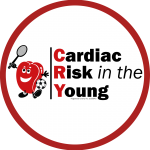Family Implications following a SADS death
Why you need to have tests
If you are a close blood relative of the person who has died of SADS, it is important that you have tests to find out if you have inherited the same medical conditions as the SADS victim. We describe all the tests in cardiac tests. If there have been any sudden or suspicious deaths in your family, including cot death, this further suggests that there may be an underlying inherited condition.
What if nothing is found in your family?
In families where someone has died of SADS and the remaining family members are tested, about 4 in every 10 families show no sign of inherited heart disease. This can be due to two reasons:
1 The SADS victim may not have inherited any abnormality from his or her parents. Either the victim was the first to suffer a mutation in the family (and therefore the victim’s children are the only relatives who are at risk), or there was another cause which has not been identified and which is not inherited.
2 Some family members may be carriers but show no signs of any disease. It is impossible to give 100% reassurance that a relative is not a carrier except in cases where a mutation has been identified in the person who has died and the victim’s relative is genetically tested to see if he or she has the same mutation. However, people who do not have any symptoms or signs are at low risk of sudden death, so in these cases the doctor can give some reassurance. The people at highest risk are those who have symptoms, or have already had a cardiac arrest, or have significant abnormalities on their ECG.
In the meantime, there is little evidence that repeated testing of relatives of someone who has died of SADS is helpful – unless the relative develops new symptoms, or the technology for detecting these conditions improves.
What if something is found in your family?
If you are a relative of someone who has died of SADS and you have been diagnosed with one of the conditions described in what causes SADS, you will need regular follow-up – whether you receive treatment or not – unless your doctor believes that you are at very low risk.
If you are young and have been tested, and your doctor thinks that you are not affected, you should have another review in the future. This is because ECG changes can become more obvious with age in children and young adults or they may show up on some ECG recordings but not on others. So, for example, children will need some follow-up until they pass through puberty.
If a recognised mutation was found in the person who died of SADS (or if another relative with signs of inherited heart disease is found to carry one), and if you are found not to have the mutation, then you can be fully assured that you are not affected.



